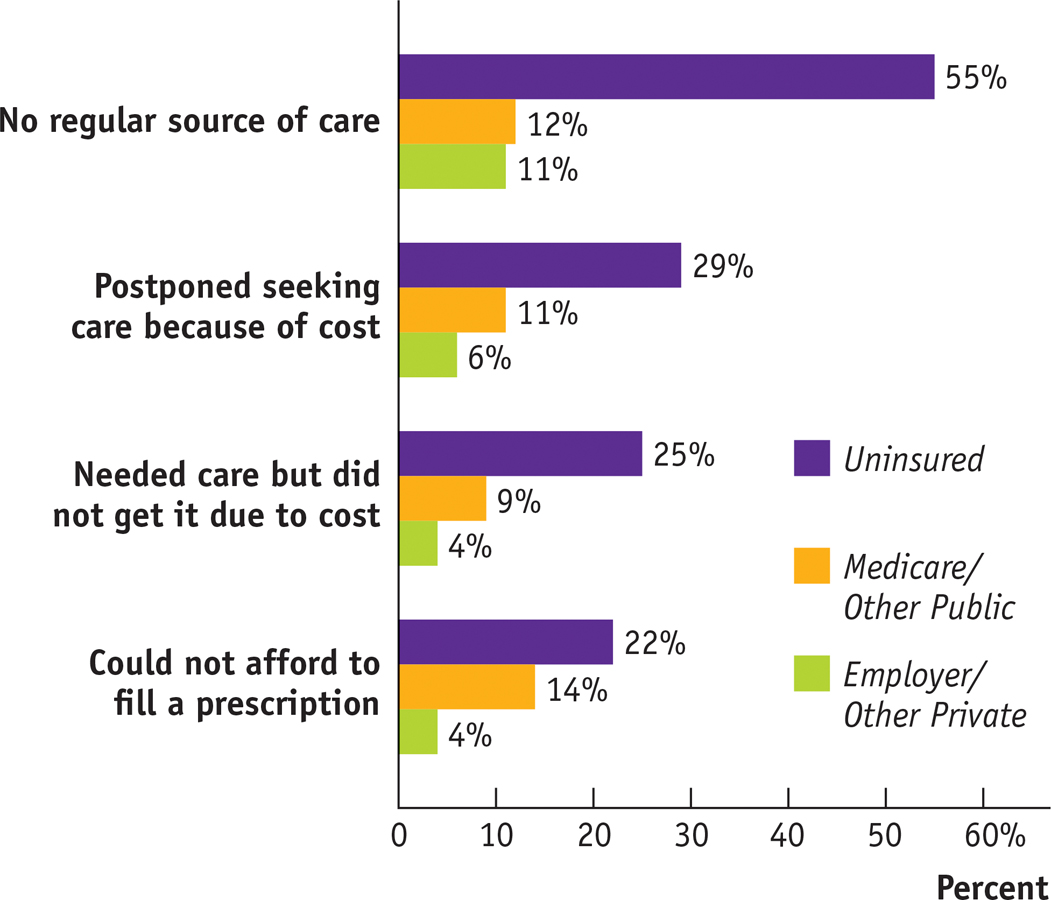The Problem of the Uninsured Before the Affordable Care Act
Before the passage of the ACA, the Kaiser Family Foundation, an independent nonpartisan group that studies health care issues, offered a succinct summary of who was uninsured in America: “The uninsured are largely low-income adult workers for whom coverage is unaffordable or unavailable.” The reason the uninsured were primarily adults is that Medicaid, supplemented by SCHIP (which provides health care for children in families that are above the poverty threshold but still have relatively low income), covers many, though not all, low-income children but is much less likely to provide coverage to adults, especially if they didn’t have children.
Low-income workers tended to be uninsured for two reasons: they were less likely than workers with higher income to have jobs that provided health insurance benefits, and they were less likely to be able to afford to directly purchase health insurance themselves. Finally, before the ACA, insurance companies frequently refused to cover people, regardless of their income, if they had a preexisting medical condition or something in their medical history suggesting that they were likely to need expensive medical treatment at some future date. As a result, a significant number of Americans with incomes that most would consider middle class could not get insurance.
It’s important to realize that lack of insurance was not simply due to poverty. Before the ACA, most of the uninsured had incomes above the poverty threshold, and 35% had incomes more than twice the poverty threshold. We should also note that some of the uninsured were people who could afford insurance but preferred to save money and take their chances.
Like poverty, lack of health insurance has severe consequences, both medical and financial. On the medical side, the uninsured frequently have limited access to health care. Figure 18-6 summarizes some of the common problems associated with access to care, all of which are much worse for the uninsured than for the insured. On the monetary side, those who are uninsured often face serious financial problems when illness strikes. In many cases those without insurance are five times more likely than those with health insurance to be contacted by collection agencies, deplete their savings paying for medical expenses, or not pay altogether.
18-6
Barriers to Receiving Health Care, 2012

Barriers to Receiving Health Care, 2012 The figure shows that the uninsured face significantly greater barriers to receiving health care than the insured. Compared to the insured, a much higher proportion of the uninsured needed care but either did not receive it or postponed it.
Source: The Henry J Kaiser Family Foundation, The Uninsured: A Primer.
